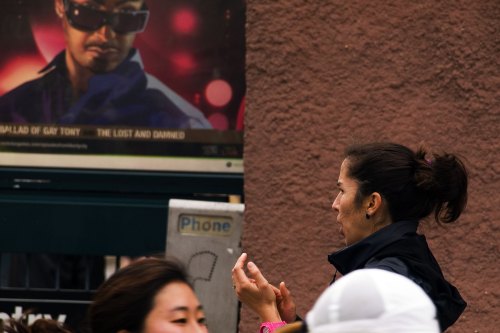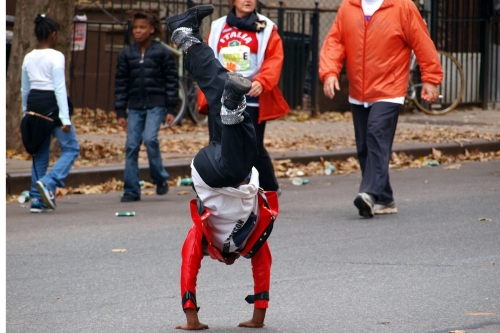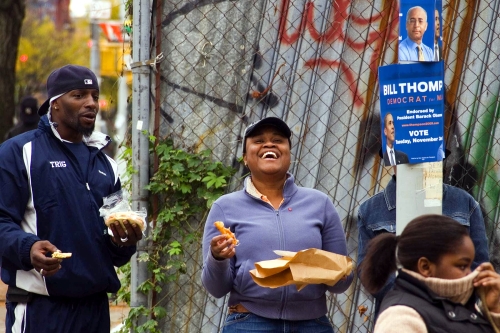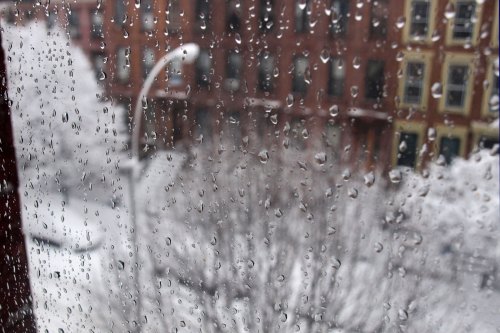 Sunday was Marathon day and I got up with a bad post-Halloween hangover to find my normally semi-deserted neighborhood packed with people. The NYC Marathon is a big deal and brings in people from across the world – some 42,ooo runners participate. It runs through all five boroughs, from the Verizona Bridge in Staten Island, through Brooklyn, on into Queens and through the Bronx before turning back into Manhattan and ending up near Central Park. In all my years in NY, I’ve never seen it, even when it ran right through my neighborhood, so this time I thought I’d better catch it, hungover or not.
Sunday was Marathon day and I got up with a bad post-Halloween hangover to find my normally semi-deserted neighborhood packed with people. The NYC Marathon is a big deal and brings in people from across the world – some 42,ooo runners participate. It runs through all five boroughs, from the Verizona Bridge in Staten Island, through Brooklyn, on into Queens and through the Bronx before turning back into Manhattan and ending up near Central Park. In all my years in NY, I’ve never seen it, even when it ran right through my neighborhood, so this time I thought I’d better catch it, hungover or not.
For some reason I thought it started in the afternoon so by the time I arrived around one, the main body of the runners had already passed, and some local people were already taking up their stools and canvas deck chairs and heading home.The crowd was thickest around Bedford and Lafayette, where the runners turned and headed back into Manhattan. One lady, who must been there all morning, stood on the corner, bellowing encouragement over and over, and even slapping the backs of ailing runners.

Woman Cheering on corner of Bedford and Lafayette
Still, watching the stragglers was enetertaining enough. One guy (presumably French) dressed as the Eiffel Tower . . .

Man running in Eiffel Tower outfit
Another who juggled while running . . .

Running Juggler
The best scene was up at the housing projects up Lafayette. The projects are the usual twelve story, brick buildings with the black grates over the windows that make them look a little like prisons – the same kind of public housing built all over the US in the 60’s. Normally, you hardly see anyone but the old folks outside in the daytime, but a BBQ had been set up in the playground with big speakers blaring out old Motown. Periodically, an MC (dressed in NY Giants colours – see below) chanted encouragement to the stragglers “You’re doing great. . .keep going, keep going . . . ” People stood by the side of the road, chanting encouragement, I guess glad to get out and be a part of it all .
The kids were out in force. One kid, dressed like Micheal Jackson (that’s the pre-wierdo, 1980’s Micheal Jackson that seems to be the image black people want to keep of him. The Micheal Jackson that was still BLACK), complete with oversized silver glove, stood on the side of the road with his buddies putting out his glove for the runners, then all of them would do cartwheels back and forth across the street, in-between the last of the straggling runners.

With the motown and people dancing on the sidewalks and the kids doing cartwheels in the street, it was a scene I haven’t seen in New York for some time, and I remembered how common this energy was here a few years ago – how you could go out on a weekend afternoon in Manhattan, and feel this same edgy, vibrant, black American energy running through the city like an electrical current. You would meet someone’s eye, someone you had nothing else in common with – say a black kid from the Bronx or Harlem or Brooklyn- and you’d have this instant empathy because you were sharing that moment of being out in New York City on a fall afternoon, digging the people, the city, the energy, and you knew just from looking at each other that you felt it, that you were aficianado.
And I realized that the difference came because these were mostly poor people out on the street, enjoying free entertainment, that poor people had to a great degree become invisible in the New York of today.

The kids had such remarkable energy, and unself-concious joy. I thought of Park Slope, the mostly white, increasingly upscale neighborhood where I worked last week, and how the kids there seem uniformly miserable – constantly crying, screaming. Even if it was heightened by the release of a special event, these kids had the magic of childhood in their faces, and watching them made me feel joyful as well. And it was good to be reminded of all the things I’ve loved about New York all these years, why I’ve come back again and again.

Kid doing cartwheels between runners


Girl holding flag with her teeth


Kids Posing along the route

Couple on Lafayette

Two kids on Lafayette
Read Full Post »
 View from the window in the eye of the storm.
View from the window in the eye of the storm.

 Back when coffee was just coffee
Back when coffee was just coffee
 Sunday was Marathon day and I got up with a bad post-Halloween hangover to find my normally semi-deserted neighborhood packed with people. The
Sunday was Marathon day and I got up with a bad post-Halloween hangover to find my normally semi-deserted neighborhood packed with people. The 















Where is New York At #47
Posted in Comment, Gentrification, New York, tagged Brooklyn, New York, Recession, Wall Street on March 4, 2010| 5 Comments »
A guy at my Manhattan watering hole, a theatre director and Soho resident since the 70’s, claims this is the most interesting time to be in New York sicne, well, the 70’s. “Everyone’s moving out of the city, no one knows what’s going to happen . . . ”
I don’t see the 70’s, or what I know of the 70’s in New York, just yet. If anything Manhattan and central Brooklyn feel like more of the same – more gentrified, less life around the edges, more of a homogenization I’ve never seen in New York before. Wall Street still pays out the big bonuses, and another bar regular who runs a high end catering business says business is up, that his Wall street clients are back splashing out for the big events.
Yet everyone I know is broke. Not desperate, not yet, but I wonder where they’ll be if this continues for a year. In my corner of central Brooklyn new cafes, increasingly upscale, are opening up and middle class white folks with babies are moving in even as the great condo binge edges threatening to transform the neighborhood crawls to a stop – some days a half dozen workers show up to work on a fifty unit building, and a 20 unit building completed last year sits empty, threatened with foreclosure, on the chopping block for a million and a half – for the whole building. Yet despite the recession, and the increasing gentrification, the still mostly working/ lower-middle class black folk in my neighborhood, by and large have retained the optimism they picked up after Obama was elected. Though I wonder too how much longer that will continue if things continue . . . .
A friend with relatives down on Wall street said the feeling is that the street will not return to anything like its pre-Crash level anytime soon. In the Atlantic, Richard Florida (the Creative Class guy), writes that New York will have to re-define itself beyond Wall street once again.
Regardless, I don’t think I’ve ever had a harder time reading New York. I’ve never seen the city so withdrawn, so homogenized – so like everywhere else. Nathan Kensinger, in his excellent post, The Bloomberg Era Pt. 1, maps out a scale of development that rivals the changes brought about by Robert Moses. I was away for most of the development period, returning for a few months at a time and often with a year or so in-between, and so experienced these changes almost second-hand. Beyond the deflation that came with Bush’s re-election, I did notice a change setting in in late 2006 – people I knew here began to withdraw into smaller and smaller circles, my favorite bars in Brooklyn and Manhattan became more homogenized, and that wonderful New York quality of random contact and possibility began to go on the retreat. And many people I knew started leaving the city, a process which is still going on now.
Yet that cycle is over, and another is about to begin. If New York feels sometimes like just another city now, I’m sure that in one year, two, it will be something else entirely.
Guy down on Wall street last summer:
Read Full Post »